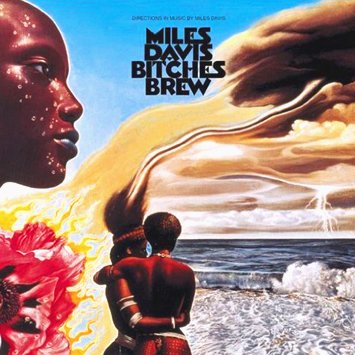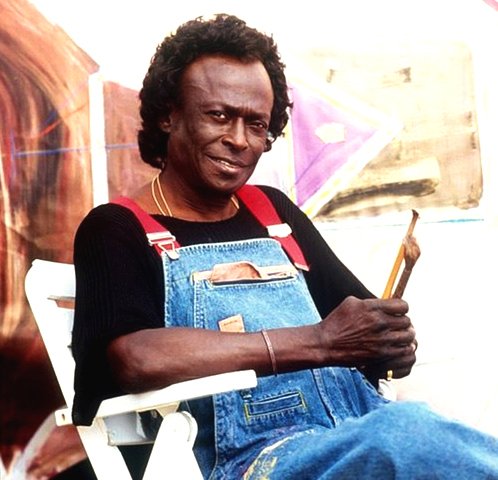Pharaoh’s Dance
Wayne Shorter (soprano sax), Miles Davis (trumpet), Bennie Maupin (bass clarinet), John McLaughlin (electric guitar), Joe Zawinul, Larry Young and Chick Corea (electric piano), Dave Holland (double bass), Harvey Brooks (electric bass), Jack DeJohnette and Lenny White (drums), and Don Alias and Juma Santos (percussion). From the album Bitches Brew (1970).
This is a fundamental double album in the history of jazz, since it laid the foundations of jazz fusion, which spread predominantly in the 1970s and remained alive during the 1980s, saved jazz from the dead end to which free jazz had led it and had a great influence on rock and funk musicians. In the late 1960s jazz was commercially dead, until Britches Brew caught the interest of record companies, which led other musicians to develop this new style and sell millions of copies. This album is the continuation of the experiments Miles Davis was doing with electric instruments, such as electric guitar and electric piano, that had begun on his previous album In a Silent Way (1969).

Album cover
Davis completely abandoned traditional jazz rhythms and incorporated rock-inspired improvisations. It often happens among fans of the same genre of music that what can lead to some to ecstasy, to other bores them or makes them nervous. Sometimes we accuse of ignorant those who don’t appreciate what we like and other times of too modern those who enjoy music we don’t understand. Likewise, Bitches Brew caused a split between the most purist jazz critics and those who were open to new paths that continues today.

Miles Davis
In any case, it was Davis’s first certified gold record and won the Grammy Award for Best Large Jazz Ensemble Album in 1971. From the mid-1960s, Davis became interested in blues, American popular music and, above all, what James Brown was playing, which was later called “funk”, where rhythm was as important as harmony, and melody sometimes even disappeared. In addition, his wife between 1968 and 1969 Betty Mabry (who later became famous singing funk under the name of Betty Davis), introduced him to several rock musicians, including Jimi Hendrix, who wanted to learn jazz techniques. Davis already knew that Sly and the Family Stone were succeeding among the black audience and Jimi Hendrix among the white.


Your post has been supported and upvoted from the Classical Music community on Steemit as it appears to be of interest to our community. We also support jazz and folk music posts!
If you enjoy our support of the #classical-music community, please consider a small upvote to help grow the support account!
You can find details about us below.
The classical music community at #classical-music and Discord. Follow our community accounts @classical-music and @classical-radio or follow our curation trail (classical-radio) at SteemAuto!
Delegation links: 10SP, 25SP, 50SP, 75SP, 100SP, 150SP, 200SP, 250SP, 500SP, 1000SP
!BEER, and up.
View or trade
BEER.Hey @fjcalduch, here is a little bit of
BEERfrom @qwerrie for you. Enjoy it!Learn how to earn FREE BEER each day by staking.